 |
| September 4, 2011 |
|
 |
Ignoring Clint Eastwood's
advice in "Dirty Harry" that opinions, like
certain body parts, are best kept to yourself.
 |
Guest columns are always welcome
from our readers, Captain Dan Mack of U.S. Airways has
an interesting story to tell.
|
It's really weird how certain memories stick like
fish in a hot iron skillet. They lay dormant for years, like
a sleeping volcano, and suddenly explode to life without
warning, particularly the ones that you would like to
forget! So it is with a memory in my past, early in my
flying career.
Miserable is the only description
that fits for that gulf-coast summer morning in July, 1985.
Don't get me wrong, the sun was shining brightly, but the
temperature and dew point were the same, and both were in
the upper seventies. Anyone in the aviation industry,
particularly the flying end of it, knows that those two
numbers, when in the seventies and low eighties is a recipe
for boomers. I had a long day ahead, six legs and all single
pilot. I was to leave PNS (Pensacola) and fly to MSY (New
Orleans) for the first leg, MSY to PFN (Panama City, Fl.)
the second. Then to TPA (Tampa, Fl.) for the third, JAX
(Jacksonville, Fl.) for the fourth, back to PFN for the
fifth and finally back to PNS. The first leg is the only one
that went as planned. It was to be a twelve hour duty day,
long by today's standards with two pilots, insane as a
single pilot. I knew it would be difficult, but I also knew
that it would be great Pilot- in- Command time that I
desperately needed if I ever wanted to land that airline
job. By the end of the day there existed one very broken
airplane, that would more than likely never see the air
again, and one frightened, young pilot that was very
thankful to be on the green side of the grass!
High
pressure off the coast of Florida dominated the south east,
pumping in very wet air from the Gulf of Mexico. There was a
fast-moving cold front extending out of a strong Low
pressure approaching from the West; the "Bulls Eye"
was centered between PNS and MSY, my route for the first two
legs.
The Piper Navajo Chieftain's huge
Continental TSIO-540's roared to life right on cue and right
on schedule. A quick taxi to runway 16, followed by systems
and run-up check, and my long day was underway. I only had
five people, minimum luggage, and a scant fuel load, IFR
minimums plus reserves. But, even with this light load, I
was surprised how sluggishly she climbed in the hot and
humid gulf-coast summer air.
At my cruise altitude
of eight thousand feet, autopilot engaged, I switched on the
weather radar for a test. Test pattern…..check! Tilt
control……check! There's already a cell at 40 miles
at my two o'clock position. Using my tilt I'll see how high
this thing is. Hmmmm….this radar will not paint that
cell even at this distance. No maintenance in New Orleans,
I'll write that up when I get back to PNS.
I
scanned the skies, the CU's were rapidly becoming TCU's and
still building, thirty minutes into a one hour and 15 minute
flight and I was already dodging the tops. By the time I
descended into MSY there was a line of storms behind me,
east of my position and west of my next destination.
Buildups were rapidly turning into cells and super cells,
requiring wide deviations during the approach and landing. I
called dispatch for a weather briefing and to discuss the
radar situation, and negotiate the next route of flight to
Panama City, Fl. Had I known at that time, what I know now,
I would never have left MSY with broken weather radar. I was
young and st…uh…inexperienced, with just over 1500
hours total time, just enough to exercise privileges of
A.T.P, and just enough also to learn how nasty a super cell
can be! My Dispatcher consisted of a person in an office
with a telephone to Flight Service. Looking back, I should
have called from the company phone in New Orleans; I would
have asked the right questions.
The line of
building super-cells extended from 100 miles into Alabama to
60 miles into the Gulf of Mexico and was building rapidly,
already containing tops above 30,000 feet. My cruise
altitude to Panama City was filed for nine thousand feet. I
turned on the weather radar, more out of habit, knowing
already that it was a futile effort. It showed the same as
the first leg, nothing but a test pattern. Lightning flashed
to the North; there were rain showers out the bottoms to the
south. Houston Center frequency was busy with commercial
airlines deviating and diverting for fuel. I should have
done the same. Gulfport, Mississippi was directly below with
gusty winds but still in the clear. Like a fool, I pressed
on. I listened in on company frequency; our flight from New
Orleans to Pensacola was just a few miles ahead, in the
building weather. He said his routing was just light to
occasional moderate turbulence with no precipitation. I
asked ATC to vector me on the same path as the company
aircraft in front of me. This sounded like a good idea at
the time, but due to my experience level, (or lack there of)
I forgot to take into consideration the movement of the
line. The few miles that separated my flight and the flight
in front of me was enough to put me directly in the path of
a building super-cell. The first down-draft hit like a giant
hand pushing down on the top of the airplane. I need power!
Mixtures full rich, props full forward, throttles…..push,
push, they're all the way to the stops! I was still
descending, eight thousand, seven thousand, finally stopping
at six thousand feet. Out the windshield was an ominous
green color, about the color of a sprout of peas. As quickly
as the downdraft stopped, an updraft started. No matter what
I tried, I could not hold altitude. Throttles idle! Control
yoke push forward! Push, Push, Push hard! The updraft ended
very abruptly, like hitting a ceiling. The altimeter started
unwinding one more time, but this time the artificial
horizon tumbled. The abrupt end to the updraft did internal
damage, loosening the forward instrument panel. One male
passenger was screaming, begging me to get him out of this
storm. I was doing all I could just to hang on. The
resulting downdraft, after the horizontal brick wall sent me
tumbling down, I still had all the pieces but without the
ADI, I could no longer tell which way was up, although I
knew I was descending rapidly. Something flew past my head,
(I later figured out it was my Jepp binder) I managed a
quick radio call to Houston Center. "Center, flight 142
going down!" Houston's response was short but to the
point, wanting to know the problem for my impending demise.
I did not answer; I could not answer, I could just barely
hang on to this wild ride.
As quickly as this
nightmare started it ended; spitting me out the bottom of
the cell at 1500 feet, nearly bottom side up; I would
estimate 100 to 110 degrees of bank to the left, nose
pointing down My Attitude Indicator was tumbled, showing
only black. Out my windshield looking up I saw water, and
quickly orienting myself, very abruptly righted myself with
a violent control input. When right-side-up, I noticed that
PNS was directly in front of me, called the tower there,
dropped the gear and landed. Never in my life, even to this
day, have I ever been so happy to be back on terra firma. At
the gate the aircraft was damaged, with a buckled right wing
main spar and a twisted fuselage, but all the pieces were
still intact. I needed to sit on the exit step for a few
minutes before I walked into the terminal. My knees had the
consistency of melted butter, my hands were shaking, and I
was sweating profusely. Fear had finally set in, especially
when I realized how close I had just come to ending my own
life and the lives of my passengers. As they exited the
aircraft, they didn't say a word, not to each other and not
to me; they were probably just as frightened as me, possibly
more, although I find that hard to believe.
I
learned several lessons that day: 1.) Trust your gut. If
your gut is telling you not to do something, DO NOT DO IT!
2.) If weather radar doesn't test, don't for a minute
believe that it will work anyway. 3.) If there is an airport
that is clear and close and the weather in front is severe,
LAND and wait. Thunderstorms always move, or rain themselves
out. The safest maneuver is called a 180 degree turn. 4.)
Never follow someone else into a line of weather. Remember,
its building and moving at the same time. 5.) If commercial
airlines are deviating and diverting, and you are in a light
aircraft, do the same.
It's much better to be on
the outside of a thunderstorm looking in, and enjoying the
beauty and awesome power of it, than it is to be on the
inside, wishing you were out. Avoid these weather phenomena
at all cost. Although beautiful to look at, they are very
dangerous to be close to in any aircraft.
I
welcome responses, and will be glad to post them here. Email
your remarks to
ron@global-air.com |
|

|
Most
Recent Editorial
Recent
Global
Air Links:


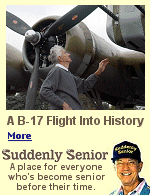
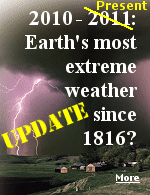

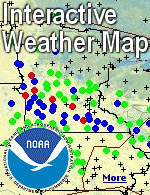

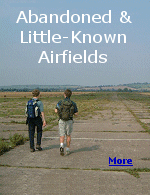
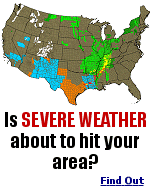
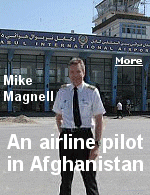
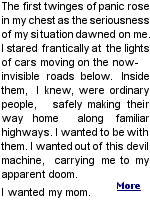 |

















